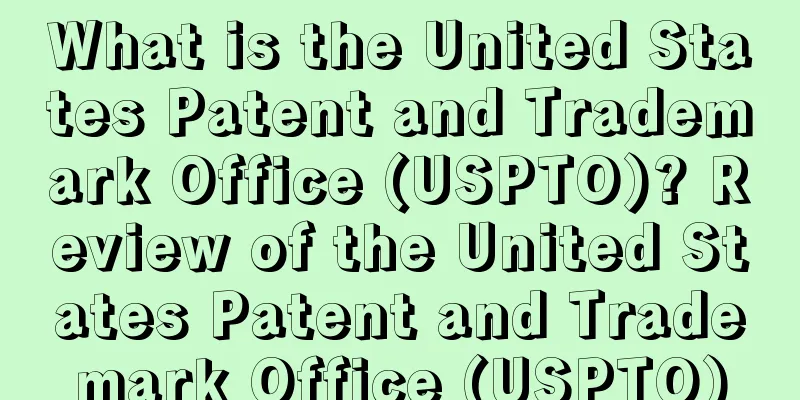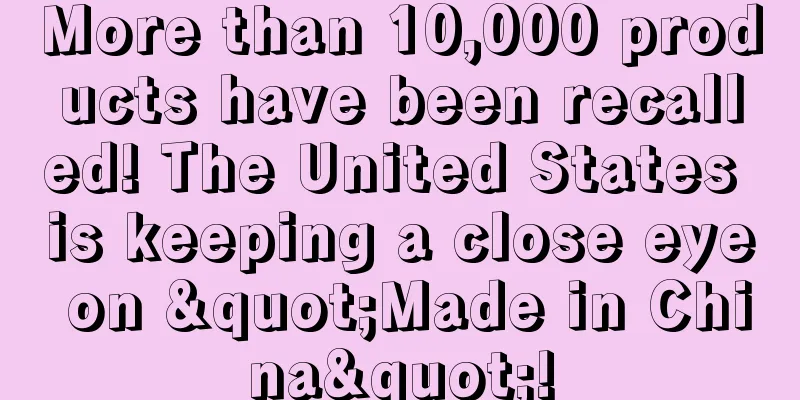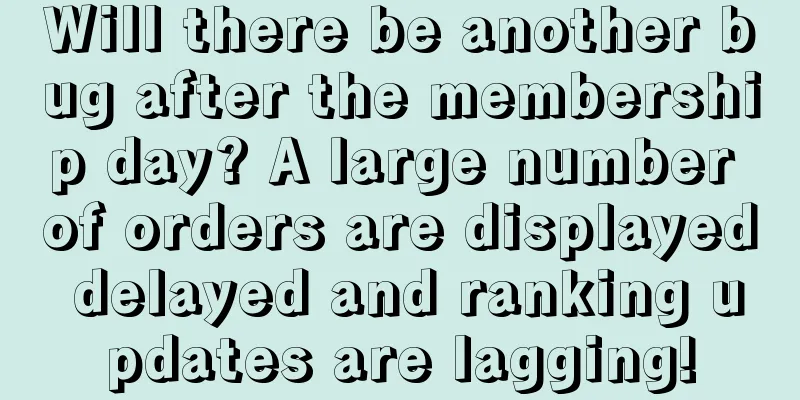What is the United States Patent and Trademark Office (USPTO)? Review of the United States Patent and Trademark Office (USPTO)

|
The United States Patent and Trademark Office (PTO or USPTO) was established in 1802. It is an agency under the U.S. Department of Commerce and is responsible for providing patent protection, trademark registration and intellectual property certification for inventors and their related inventions. Official website : http://www.uspto.gov/ Overview The United States Patent and Trademark Office is an important agency that handles national patent and trademark application and approval procedures. It is affiliated with the U.S. Department of Commerce. The main responsibilities of the United States Patent and Trademark Office are to provide patent protection, trademark registration and intellectual property certification for inventors and their related inventions. The United States is one of the earliest countries in the world to implement the patent system. Article 1, Section 8, Clause 8 of the Constitution of the United States, enacted in September 1787, clearly stipulates: "For the advancement of science and useful arts, Congress shall have power to secure for limited Times to Authors and Inventors the exclusive Right to their respective Writings and Discoveries." This is also the legislative basis for the United States Patent Act. The first U.S. Patent Act was signed by the President of the United States on April 10, 1790. The current law was enacted in 1952 and was subsequently revised twice in 1984 and 1994. On November 29, 1999, then-U.S. President Clinton signed the American Inventor Protection Act, which directly incorporated many important provisions into the current law, including changing the non-public examination system to an early public delayed examination system. Functions The main functions of the USPTO include: 1. Patent authorization and trademark registration; 2. Provide services to inventors related to their patents or inventions, product and service identification; 3. Manage patent, trademark and trade-related intellectual property rights by implementing laws related to patents and trademarks, and make relevant policy recommendations to the President and the Secretary of Commerce to provide advice and suggestions for strengthening the country's economic strength; 4. Provide advice and assistance to the Ministry of Commerce and other agencies on intellectual property matters; 5. Help and support innovation and national scientific and technological development by preserving, classifying and disseminating patent information. Organizational Structure As one of the 14 subordinate bureaus of the U.S. Department of Commerce, the USPTO is a non-commercial entity. The director is appointed by the president after approval by the U.S. Senate and concurrently serves as the deputy secretary of the Department of Commerce in charge of intellectual property affairs. Based on the director's nomination, the secretary of Commerce appoints an assistant deputy secretary of the Department of Commerce in charge of intellectual property affairs to serve as the deputy director of the USPTO. The USPTO has the following organizational structure: 1. Patent Office Responsible for patent examination and related affairs. It consists of the Inventor Assistance Program Office, Patent Examination Policy Department, Patent Business Department and Patent Resources and Planning Department. 2. Trademark Office Responsible for trademark registration and related matters. It consists of the Trademark Examination Policy Department and the Trademark Business Department. 3. General Legal Counsel Department The main tasks are to serve as the legal adviser to the director, handle appeals against recruitment and training decisions, provide legal advice, conduct legal reviews of various decisions made by the USPTO, and defend the USPTO in the Administrative Tribunal. It consists of the Common Law Office, the Intellectual Property Law and Lawyer Office, the Patent Appeal and Conflict Board, the Trademark Trial and Appeal Board, and the Personnel Recruitment and Training Office. 4. International Department (Department in charge of foreign affairs) Responsible for contacting Congress, handling international affairs, and safeguarding the legitimate rights and interests of American intellectual property holders worldwide. It consists of the Congressional Relations Division, the International Relations Division, and the Law Enforcement and Rights Protection Division. 5. Administration Department Responsible for USPTO human resources, cooperative planning and management services. It consists of the Office of Civil Rights, the Office of Human Resources and the Office of Administrative Services. 6. Finance Department Responsible for financial planning, management and procurement affairs. It consists of the Planning Office, the Finance Office, the Financial Management System Office and the Procurement Office. 7. Ministry of Information Responsible for formulating strategic information plans and operating budgets; developing and maintaining automated information systems; managing computer facilities, equipment and communication networks; providing technical and technical development direction guidance for rebuilding business processes; providing policy guidance to affiliated institutions, etc. It consists of the Office of the Deputy Chief Information Officer, the Office of System Development and Maintenance, the Office of Customer Information Services, the Office of IT Business and Customer Support Services, and the Office of Structural, Engineering and Technical Services. 8. The Patent Public Advisory Committee and the Trademark Public Advisory Committee are responsible for providing the USPTO with advice on patent and trademark budgets and management; responsible for reviewing the USPTO's implementation of policies, goals, performance, budgets, and fee income; providing advice to the Director on the above matters, and preparing an annual report within 60 days after the end of each fiscal year and submitting it to the President, the Secretary of Commerce, and the Congressional Judiciary Committee. Pursuant to the American Inventor Protection Act, the USPTO has established two public advisory committees, Patents and Trademarks. Each committee consists of 12 members, 9 of whom are appointed by the Secretary of Commerce and 3 by the Director of the USPTO. They represent the interests of various USPTO users and trade unions. The US patent examination system was formally established on July 4, 1836. At that time, the USPTO had about 6 staff members, of which only one was an examiner. In 1936, the number of employees in the patent office grew to 1,338, of which 668 were examiners. In 2007, the USPTO had a total of 8,913 federal employees, of which 5,477 were patent examiners and 404 were trademark examiners. Review Process The current U.S. Patent Law divides patents into three types: invention patents, design patents and plant patents, and the protection period is 20 years from the date of application. Section 111 of the United States Patent Act (35 U.S.C. §111) clearly stipulates patent applications: Patent applications should be submitted by the inventor or his authorized person in written form; all relevant fees should be paid within the statutory period. Therefore, the four major elements of a U.S. patent application are: 1. Description (i.e., description of the invention and at least one claim); 2. Drawings (if necessary); 3. Affidavit or declaration (usually signed by the inventor); 4. Fees (various fees payable by law). Among them, the first two elements are the basic conditions for obtaining an application date. USPTO patent application approval process: The inventor or his authorized person submits the application → The USPTO acceptance department receives it, determines the date of receipt and gives an application number → The application department conducts a formal review and determines the application date, completes document processing and data collection, and the rights transfer department handles the rights transfer affairs → Classification → The application is assigned to the examination department for examination according to the classification number. The examination process mainly includes: 1) formal examination and search 2) substantive examination 3) applicant's response 4) re-examination 5) making a final decision, etc. → If you are dissatisfied with the decision, you can appeal to the Patent Appeals and Conflicts Board. Before the 1999 amendment, the U.S. Patent Act stipulated that patent applications would not be published before they were granted, and the USPTO was responsible for keeping them confidential. In order to be consistent with the General Agreement on Tariffs and Trade, the 1999 revised U.S. Patent Act stipulated that patent applications should be published immediately after 18 months from the filing date or priority date, and the applicant may also request early publication. Latest News The number of patent applications has continued to rise, and their complexity has also increased, resulting in a high backlog of applications awaiting examination at the USPTO, which reached nearly 760,000 in 2007, a record high. In order to effectively address this problem and improve work efficiency while ensuring examination quality, the USPTO has taken a number of measures. 1. Promote the "Patent Examination Highway" project The Patent Prosecution Highway (PPH) means that when the Office of First Filing (OFF) makes a decision on the applicability/permittance of the claims of an application, the applicant can submit an accelerated examination request to the Office of Second Filing (OSF) for the corresponding application, and the OSF can use the search and examination results of the OFF. In this way, applicants can obtain overseas patent authorization more conveniently, and the search and examination results can be mutually utilized among the offices, reducing their own workload. In view of this, USPTO decided to cooperate with EPO and the offices of Japan, South Korea, the United Kingdom and Canada to vigorously promote the project. Among them, the PPH project with Japan was officially implemented in January 2008, and the PPH projects with the United Kingdom and Canada have also entered the trial stage. 2. Strengthen international cooperation in PCT application search and examination In order to improve the efficiency and quality of patent examination and focus more on processing the backlog of domestic applications, the USPTO began to cooperate with the Australian Intellectual Property Office in 2005, with Australia providing search and examination services for PCT applications. In 2007, the Australian Intellectual Property Office processed nearly 1,200 PCT applications in different technical fields for the USPTO. In addition, the USPTO and the Swedish Patent and Registration Office (PRV) launched a similar pilot project in September 2007 to test the feasibility of PRV providing PCT application search and examination services to the USPTO. According to the relevant provisions of the project, PRV will provide search and examination services for 50 PCT applications accepted by the USPTO; the USPTO will evaluate the results to determine whether the quality of PRV's work meets its requirements. 3. Implement a fast-track review process In August 2006, the USPTO began to implement the fast-track examination procedure. According to this procedure, inventions in any technical field can be examined and a decision on whether to grant an invention can be made within 12 months, which can shorten the examination period by 25%-75% compared with the past. However, this procedure has high requirements for application documents. The total number of claims for each patent application cannot exceed 20, of which no more than 3 are independent claims, and no multiple dependent claims may be included; the applicant must complete the search of the prior art on his own, provide all the prior art and related information that are most similar to his invention; explain the differences between the invention and the prior art, its practical value, and whether the contents of the written description and the claims are consistent. In addition, the deadline for applicants to respond to various notices has also been shortened. On March 13, 2007, the first patent examined and authorized under this procedure was published. The patent that won this honor was a patent for a printer ink gauge, which was submitted to the USPTO by Brother Inc. in September 2006. According to normal procedures, the average examination period for patent applications in the field of ink cartridge technology is 25.4 months, but this patent took only 6 months from examination to authorization, saving the applicant 18 months. 4. Launch of the “Patent Examination Public Review Pilot Project” On June 15, 2007, the USPTO began to implement the "Patent Examination Public Review Pilot Project" (Peer Review Pilot) for a period of one year. The project involves 250 published patent applications in the computer field. Applicants voluntarily participate and agree that the USPTO will solicit public opinions on their patent applications (current US law stipulates that the public has no right to submit opinions on their patent applications without the consent of the applicant). Professionals in the computer field can review the 250 published patent applications and submit relevant technical reference documents on the content of the application claims before the examiner conducts substantive examination, so that the examiner can grasp more relevant technical information in a shorter period of time, thereby shortening the examination cycle of the patent application. In addition, to further speed up the examination process and improve the quality of examination, the USPTO also supports applicants in submitting search and supporting documents, and recommends that Congress pass legislation to allow third parties to submit appropriate relevant information during the examination of patent applications. References
|
<<: What is a Double Tax Treaty? Double Tax Treaty Review
>>: What are Value-Added Services? Value-Added Services Review
Recommend
What is the US CPSC certification? US CPSC certification evaluation
CPSC is the abbreviation of the U.S. Consumer Prod...
The shopping peak ends before Black Friday! Canadian holiday season consumption insights
It is learned that according to the "2022 Hol...
Breaking news! Amazon has removed many brands. You can try the following methods
text Recently, my friends and forums have been bu...
What is an Amazon buyer account? Amazon buyer account review
There are various differences in the buyer account...
The end of the distribution business? Global Easy Shopping becomes the person subject to execution, and distribution companies go bankrupt one after another!
▲ Video account focuses on cross-border navigation...
Several Amazon mailboxes recommended for collection
Image source: 123rf.com.cn Quickly promote the 32n...
DeepSeek + New Amazon Operation Ideas, How Should Amazon Sellers Use DeepSeek?
Anonymous user My C position As the title says, do...
What is UK VAT? UK VAT Review
VAT is the abbreviation of Value Added Tax, which ...
2022 Canadian Beauty Market Report: Makeup sales surge 38%!
According to data from market research firm The NP...
What is bridenew? bridenew review
Boy London is a British streetwear brand founded b...
What is Jackfruit? Jackfruit Review
Bolome was founded in 2015 and entered the field t...
What is gretelhome? gretelhome review
Founded in 2009 by British interior designer Abby ...
Walmart improves B2B tools and services to capture $1.8 trillion blue ocean market
It is learned that Walmart Business, the B2B busin...
What is trademark squatting? Trademark squatting review
Trademark squatting refers to the competitive beha...
What is Ancheer? Ancheer Review
ancheer is a leading distributor of high - quality...









